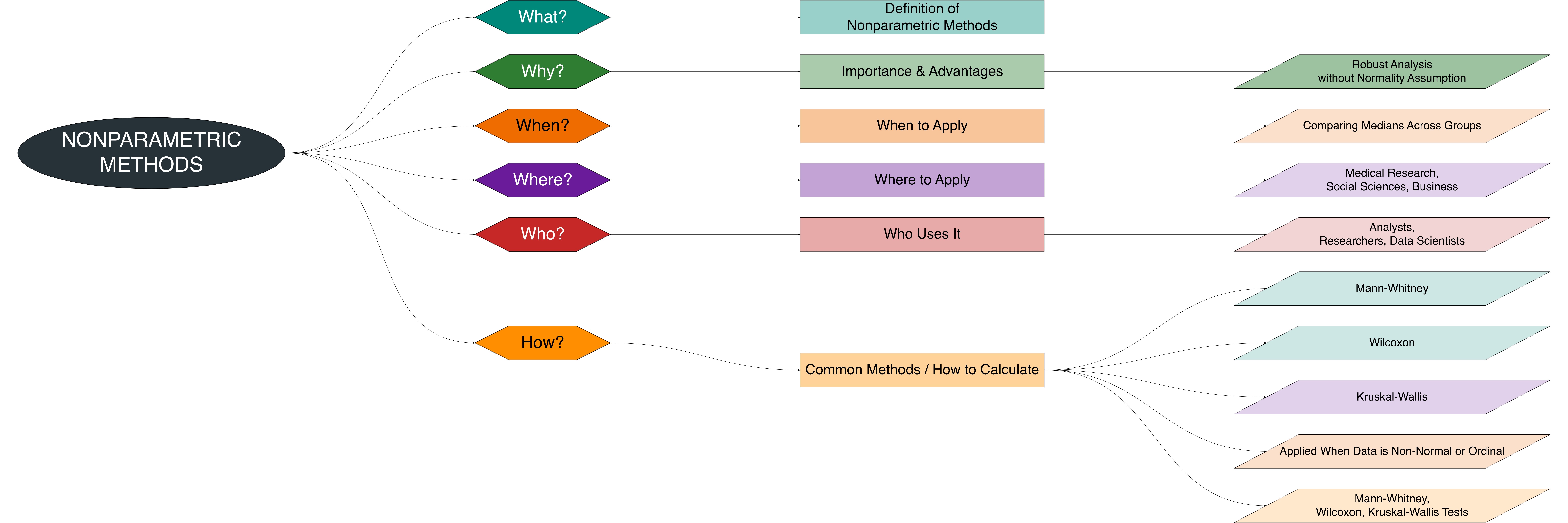10 Nonparametric Methods
Nonparametric methods are statistical techniques that do not rely on assumptions about the underlying population distribution. Unlike parametric methods, which often assume normality or other specific distributions, nonparametric approaches are more flexible and can be applied to data that are ordinal, skewed, or otherwise non-normal.
These methods are particularly useful when sample sizes are small or when the data violate assumptions required by parametric tests. Nonparametric methods can be used for both hypothesis testing and estimation.
Common nonparametric techniques include:
- Wilcoxon Signed-Rank Test: Compares paired or matched samples to evaluate whether their population mean ranks differ.
- Mann-Whitney U Test (or Wilcoxon Rank-Sum Test): Tests whether two independent groups come from the same distribution.
- Kruskal-Wallis Test: A nonparametric alternative to one-way ANOVA, used to compare more than two groups.
- Spearman’s Rank Correlation: Measures the strength and direction of association between two ranked variables.
Nonparametric methods (Figure 10.1) connect naturally to topics like Central Tendency, Statistical Dispersion, and Statistical Inference. For instance, while parametric tests often compare means, nonparametric tests compare medians or ranks, providing robust insights when assumptions about the data cannot be met.
Visualization tools, such as boxplots, rank plots, and histograms, can help illustrate the data’s distribution and support interpretation of nonparametric results. These methods are widely used in research, medical studies, and social sciences where data often deviate from idealized distributions [1]–[3].

